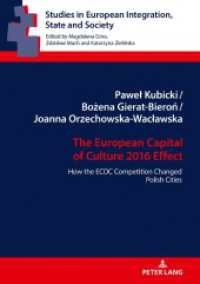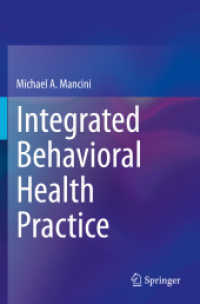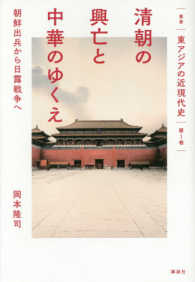- ホーム
- > 洋書
- > ドイツ書
- > Humanities, Arts & Music
- > Music
Full Description
This book is interdisciplinary in nature and examines the debate over beauty in twentieth-century art. It synthesizes artistic phenomena and composers' aesthetic attitudes considering the ideological and social contexts of music from the twentieth and twenty-first centuries. The proposed historiographical structure is based on the premise that diverse artistic phenomena and aesthetic attitudes can be interpreted in relation to the concept of beauty, which was largely "banished" in the twentieth century. Jarzębska addresses the debates over models of musical culture in the interwar period, inspired by the ideas of national and progressive music. She also explores issues related to musical life, which in the postwar period was influenced by the Iron Curtain and , at the turn of the second millennium by postmodern philosophy and the rise of rock culture.
Contents
Introduction - Part I. Towards modernity - 1. In the shadow of Wagner and Nietzsche - 2. The ideas of pantheism, theosophy and futurism and their resonance in the art of musical composition - 3. Interest in non- European and old pagan cultures - 4. The controversial idea of national music - Part II. The height of modernity - 5. The dispute over the aesthetics of modern music - 6. The dispute over 'unity in variety' in the art of composition and the notion of progress - 7. Avant- garde ideas of serialism, aleatorism and sonorism - 8. The Cold War in musical culture, the yearning for beauty and the joy of making music - Part III. In the fetters of late modernity - 9. The decline of the idea of progress and the search for new creative ideas - 10. Liberation from the pressure of the avant- garde: postmodern games with tradition, the 'musical ark' and the biblical world in music - 11. 'Eternal' classicism and existential dilemmas in music - List of examples - Selected bibliography - Index








